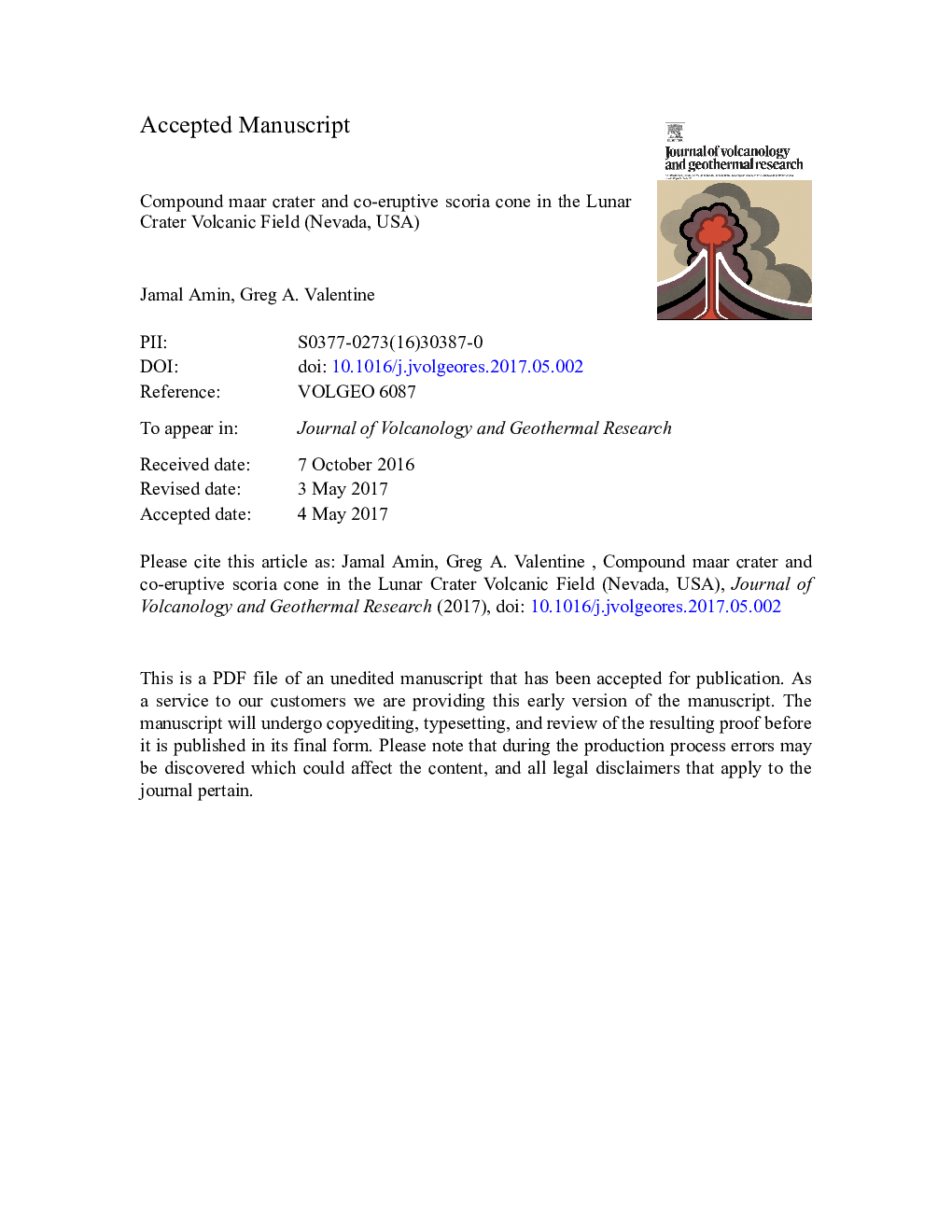| Article ID | Journal | Published Year | Pages | File Type |
|---|---|---|---|---|
| 5783884 | Journal of Volcanology and Geothermal Research | 2017 | 37 Pages |
Abstract
Bea's Crater (Lunar Crater Volcanic Field, Nevada, USA) consists of two coalesced maar craters with diameters of ~Â 440Â m and ~Â 1050Â m, combined with a co-eruptive scoria cone that straddles the northeast rim of the larger crater. The two craters and the cone form an alignment that parallels many local and regional structures such as normal faults, and is interpreted to represent the orientation of the feeder dyke near the surface. The maar formed among a dense cluster of scoria cones; the cone-cluster topography resulted in crater rim that has a variable elevation. These older cones are composed of variably welded agglomerate and scoria with differing competence that subsequently affected the shape of Bea's Crater. Tephra ring deposits associated with phreatomagmatic maar-forming eruptions are rich in basaltic lithics derived from <Â 250Â m depth, with variable contents of deeper-seated ignimbrite lithic clasts, consistent with ejection from relatively shallow explosions although a diatreme might extend to deeper levels beneath the maar. Interbedding of deposits on the northeastern cone and in the tephra ring record variations in the magmatic volatile driven and phreatomagmatic eruption styles in both space and time along a feeder dike.
Related Topics
Physical Sciences and Engineering
Earth and Planetary Sciences
Geochemistry and Petrology
Authors
Jamal Amin, Greg A. Valentine,
